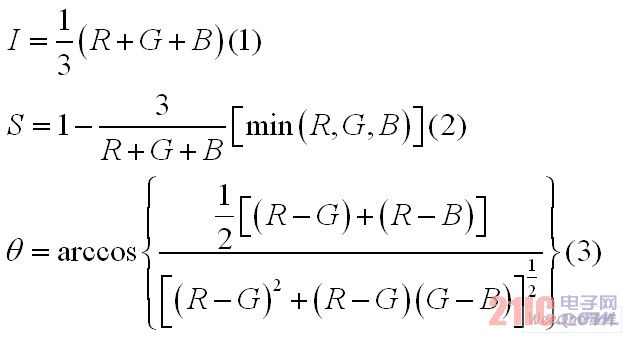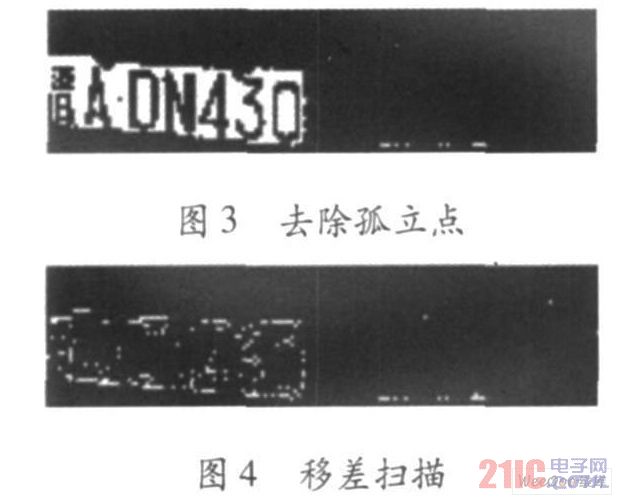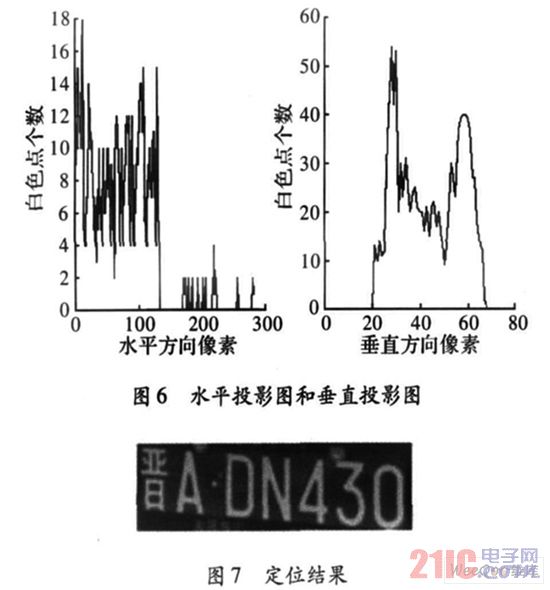Abstract: In order to improve the positioning rate and accuracy of license plates, a method of combining color features, image processing and projection is proposed by studying the characteristics of license plates. Firstly, the license plate color area is used to determine the possible area of ​​the license plate from the whole image. Then the horizontal shift scan is used, the edge detection processes the image, and the projection and the length and width ratio of the license plate are combined to determine the specific position of the license plate. The results show that this method is more accurate for the blue-white white license plate, and has certain robustness and real-time performance.
This article refers to the address: http://
The license plate recognition system occupies an important position in the modern transportation system, and is widely used in parking lot management, highway toll management, and intersection monitoring. License plate location is an important part of the license plate recognition system. Since the license plate image of the license plate is collected outdoors, the image background is complex, the noise interference is serious, and the image quality is low, so the license plate location is affected.
The positioning of the license plate has an important position in the license plate recognition system and is a prerequisite for subsequent license plate character recognition. However, since the license plate image of the license plate is collected outdoors, the image background is complicated, the noise interference is serious, and the image quality is low, so the license plate location is often affected and cannot be accurately positioned. Therefore, in the license plate location algorithm, the key is to find a certain image processing method, so that the original image can clearly display the license plate area after the processing of the algorithm, and at the same time, the non-licence plate area in the image disappears or weakens, so that the image can be accurately and effectively Position the license plate in the image. The main purpose of this paper is the blue-and-white white license plate. Firstly, the license plate blue feature and image processing method are used for initial positioning, the license plate candidate area is reduced, and then the first-positioned license plate image is projected, and the license plate positioning is finally completed.
1. Initial positioning of the license plate
1.1. License plate converted from RGB space to HSI space
Color images contain rich color information, giving a good visual effect, based on this feature for initial positioning. However, in general, the color pictures are all in the RGB model, and the HSI model is more suitable for the human visual system. Therefore, the color space conversion is needed to convert the RGB model into the HSI model. The conversion formula from RGB space to H SI space is :

When B <=G, H = θ; when B > G, H = 360°-θ.
In the blue-and-white license plate, the blue chromaticity H is about 240°, and the saturation S value is large. With these two quantities, the blue portion of the input image can be completely filtered, thereby removing a large amount of background noise.
The color of the blue license plate was tested experimentally >0.75, and the saturation was >0.51. It can be seen that the rough locating license plate area can be obtained by using the range values ​​of the chromaticity and saturation of the HS I space, and the result is shown in FIG. 1 .

1.2. Pre-processing of license plate location
After the initial positioning, the license plate range is reduced, and the license plate image is grayscale processed. The texture distribution of the grayscale image is mainly in the lamp, license plate and radiator, and the gray value of the license plate position is different from other parts, and the non-license plate is different. Most of the grayscale changes in the area are relatively flat.
(1) remove isolated highlights
Under normal circumstances, the collection process of license plate images is affected by various factors, such as background, lighting and some characteristic factors of the car itself, which may cause noise in the picture. Since the initial positioning has removed most of the license plate image background, it is reduced. The noise point. In order to reduce the possible area of ​​the license plate, the bwmorph function in the Matlab toolbox can be used to effectively remove the isolated points. The result is shown in Figure 3.

(2) shift scanning and edge detection
The shift scan scans the entire image from left to right, with adjacent pixels as the gray level of the weakened horizontal texture, and retains and increases the gray level at the vertical jump, as shown in equation (4).

In the formula, f (xj, yi) is the original image, and g (xj, yi) is the scanned image. After processing, the vertical texture and lines of the image become more obvious, thus weakening the other areas to highlight the license plate area. As shown in Figure 4. Then use edge detection to highlight the boundary of the area where the license plate is located from the entire picture, so that the features of the license plate area are more obvious. The effect is shown in Figure 5.

Figure 5 edge detection map
2. Precise positioning of the license plate
After the shift-scanned picture, the license plate area in the grayscale image becomes more textured and lined, and the noise of the entire picture is less, and the boundary between the horizontal and vertical directions of the license plate can be determined.
This paper uses horizontal projection and vertical projection to determine the boundary of the license plate.
By the edge detection processing of the image, the license plate area is clearly divided, and the noise point of the non-car license area is reduced, so the horizontal projection method is used to determine the license plate boundary in the vertical direction.
The horizontal projection is to scan the image f (xj, yi) line by line from top to bottom, and add the values ​​of each column to obtain a one-dimensional function f (yi). Transform the two-dimensional function into a one-dimensional function, as shown in equation (5).

The resulting one-dimensional function is a statistic of the white pixels of each column of the image. When the f( yi) value is large, the corresponding license plate area; when the f (yi) value is small or 0, corresponding to the non-license plate area noise, this feature is used to determine the boundary of the license plate horizontal direction. Drawing an image on the function f yi , it can be found that when f (yi) is not 0, the corresponding f (xj, yi ) of the point has white pixel points in the vertical direction. When f yi is 0, the corresponding f (xj , yi) has no white pixels in the vertical direction, and can be determined as a non-license plate area.
When the left and right boundaries of the license plate are determined, the vertical direction is relatively less than the noise. The vertical projection is to scan the image f (xj, yi) line by line from left to right, and add the values ​​of each line to obtain a one-dimensional function f ( Xj ).
As in (6).

The projected views of the horizontal projection and the vertical projection are shown in Figures 6 and 7.

In this process, the threshold is selected based on the image of the projected image. Because in the projected image, it represents the accumulation of white pixels of each column or row. Therefore, when the value of the projection map is large, the white pixels representing the column or the row are more, which is the license plate area; when the value of the projection map is small, it is a noise point, so it is necessary to determine a threshold to remove the noise. The image processing method adopted in this paper has removed most of the noise points, so the threshold is set first, the license plate area is larger than the value, and the license plate has a ratio of length to width. 7, according to this feature, the final positioning.
In the license plate location, the positioning method mainly considers whether the anti-interference to noise is good. The preliminary positioning of the license plate area in the text is through the conversion of the color model, and the license plate position is roughly determined by the range of chromaticity and saturation. A large amount of background noise is removed, which provides a reliable basis for the accuracy of secondary positioning. In the precise positioning, considering the noise of the car itself, such as radiators, lights, etc., but because the license plate position texture is prominent, the body noise is relatively small, so the position of the license plate is more prominent by the differential scanning, and only the non-license plate area is left. Separate isolated highlights. Projection is used in precise positioning, so isolated bright spots must be removed. The Matlab toolbox is used in this paper to effectively remove a large number of isolated highlights. Horizontal and vertical projections are used to determine the horizontal and vertical boundaries. At the same time, the license plate itself is used to determine the length and width of the license plate. The experiment proves that the noise of the license plate picture is good and the positioning effect is good.
3. Conclusion
In this paper, the license plate location method based on color and projection is used to determine the license plate area in two steps. By testing 320 car images with different resolutions of 1 024 % 768, the positioning success rate is more than 8*%. The experimental data is shown in Table 1.
Table 1 Experimental results

Experiments show that the algorithm effectively realizes the problem that the license plate image is accurately positioned under the influence of various factors such as the external environment and complex background, and has the advantages of real-time and accuracy. At the same time, because the secondary positioning is to locate the processed license plate image, the positioning time is obviously shortened, which has a good application prospect.
Ningbo Beilun Tiaoyue Machine Co., Ltd. can make kinds of Plastic Spools/plastic spool/plastic reel/plastic bobbin according to customer's drawing or samples.
Application:
Our plastic spools can be used for a variety of applications. Some of these applications include:
wire& cable
insulated wire
welding/soldering
jewelry wire
leather cord
electrical wire
fiber optic cable
picture hanging wire
kite line
Ideal for:
Building/ insulated wire
Communications cable-category wire applications
Low-voltage wire
older Ribbon and tape
Rope Monofilament
Feature:
sustainability-return,reuse
Three-piece wire reels feature plastic flanges bolted to a plastic barrel,
create a durable, dimensionally true and splinter-free reel. Flange diameters
range from 265mm to 1000mm with adjustable barrel traverses.
User benefits:
1. No splinters, sharp edges or nails that can damage wire and cable sheathing
2. Resists the elements better to provide longer usage period
3. Lighter weight than steel or wood
4. Smooth payoff eases installation

Plastic Wire Spool, Plastic Wire Reel, Plastic Wire Drum, ABS Wire Spool, PP Wire Spool
NINGBO BEILUN TIAOYUE MACHINE CO., LTD. , http://www.spool-manufacturer.com